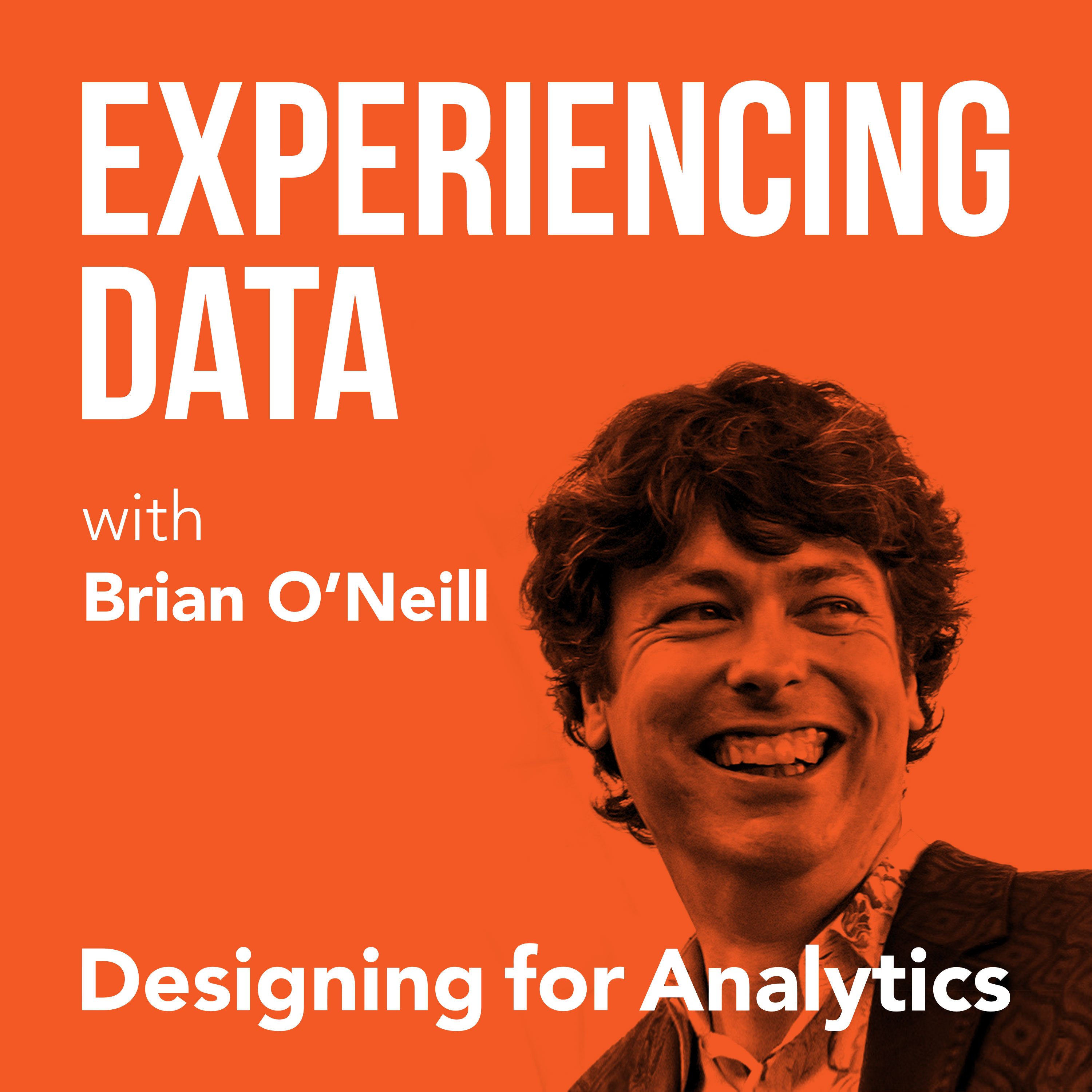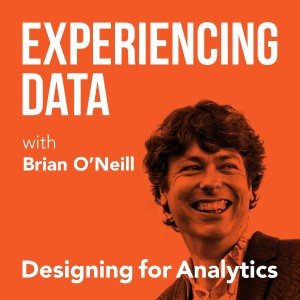

141.5K
Downloads
173
Episodes
Is the value of your enterprise analytics SAAS or AI product not obvious through it’s UI/UX? Got the data and ML models right...but user adoption of your dashboards and UI isn’t what you hoped it would be? While it is easier than ever to create AI and analytics solutions from a technology perspective, do you find as a founder or product leader that getting users to use and buyers to buy seems harder than it should be? If you lead an internal enterprise data team, have you heard that a ”data product” approach can help—but you’re concerned it’s all hype? My name is Brian T. O’Neill, and on Experiencing Data—one of the top 2% of podcasts in the world—I share the stories of leaders who are leveraging product and UX design to make SAAS analytics, AI applications, and internal data products indispensable to their customers. After all, you can’t create business value with data if the humans in the loop can’t or won’t use your solutions. Every 2 weeks, I release interviews with experts and impressive people I’ve met who are doing interesting work at the intersection of enterprise software product management, UX design, AI and analytics—work that you need to hear about and from whom I hope you can borrow strategies. I also occasionally record solo episodes on applying UI/UX design strategies to data products—so you and your team can unlock financial value by making your users’ and customers’ lives better. Hashtag: #ExperiencingData. JOIN MY INSIGHTS LIST FOR 1-PAGE EPISODE SUMMARIES, TRANSCRIPTS, AND FREE UX STRATEGY TIPS https://designingforanalytics.com/ed ABOUT THE HOST, BRIAN T. O’NEILL: https://designingforanalytics.com/bio/
Episodes

Tuesday Jun 15, 2021
Tuesday Jun 15, 2021
On today’s episode of Experiencing Data, I’m so excited to have Omar Khawaja on to talk about how his team is integrating user-centered design into data science, BI and analytics at Roche Diagnostics.
In this episode, Omar and I have a great discussion about techniques for creating more user-centered data products that produce value — as well as how taking such an approach can lead to needed change management on how data is used and interpreted.
In our chat, we covered:
- What Omar is responsible for in his role as Head of BI & Analytics at Roche Diagnostics — and why a human-centered design approach to data analytics is important to him. (0:57)
- Understanding the end-user's needs: Techniques for creating more user-centric products — and the challenges of taking on such an approach. (6:10)
- Dissecting 'data culture': Why Omar believes greater implementation of data-driven decision-making begins with IT 'demonstrating' the approach's benefits. (9:31)
- Understanding user personas: How Roche is delivering better outcomes for medical patients by bringing analytical insights to life. (15:19)
- How human-centered design yields early 'actionable insights' that can lead to needed change management on how data is used and interpreted. (22:12)
- The journey of learning: Why 'it's everybody's job' to be focused on user experience — and how field research can help determine an end-users needs. (27:26)
- Omar's love of cricket and the statistics collected about the sport! (31:23)
Resources and Links:
- Roche Diagnostics: https://www.roche.com/
- LinkedIn: https://www.linkedin.com/in/kmaomar/
- Twitter: https://twitter.com/kmaomar
Quotes from Today’s Episode
“I’ve been in the area of data and analytics since two decades ago, and out of my own learning — and I’ve learned it the hard way — at the end of the day, whether we are doing these projects or products, they have to be used by the people. The human factor naturally comes in.” - Omar (2:27)
“Especially when we’re talking about enterprise software, and some of these more complex solutions, we don’t really want people noticing the design to begin with. We just want it to feel valuable, and intuitive, and useful right out of the box, right from the start.” - Brian (4:08)
“When we are doing interviews with [end-users] as part of the whole user experience [process], you learn to understand what’s being said in between the lines, and then you learn how to ask the right questions. Those exploratory questions really help you understand: What is the real need?” - Omar (8:46)
“People are talking about data-driven [cultures], data-informed [cultures] — but at the end of the day, it has to start by demonstrating what change we want. ... Can we practice what we are trying to preach? Am I demonstrating that with my team when I’m making decisions in my day-to-day life? How do I use the data? IT is very good at asking our business colleagues and sometimes fellow IT colleagues to use various enterprise IT and business tools. Are we using, ourselves, those tools nicely?” - Omar (11:33)
“We focus a lot on what’s technically possible, but to me, there’s often a gap between the human need and what the data can actually support. And the bigger that gap is, the less chance things get used. The more we can try to close that gap when we get into the implementation stage, the more successful we probably will be with getting people to care and to actually use these solutions.” - Brian (22:20)
“When we are working in the area of data and analytics, I think it’s super important to know how this data and insights will be used — which requires an element of putting yourself in the user’s shoes. In the case of an enterprise setup, it’s important for me to understand the end-user in different roles and personas: What they are doing and how their job is. [This involves] sitting with them, visiting them, visiting the labs, visiting the factory floors, sitting with the finance team, and learning what they do in the system. These are the places where you have your learning.” - Omar (29:09)
No comments yet. Be the first to say something!